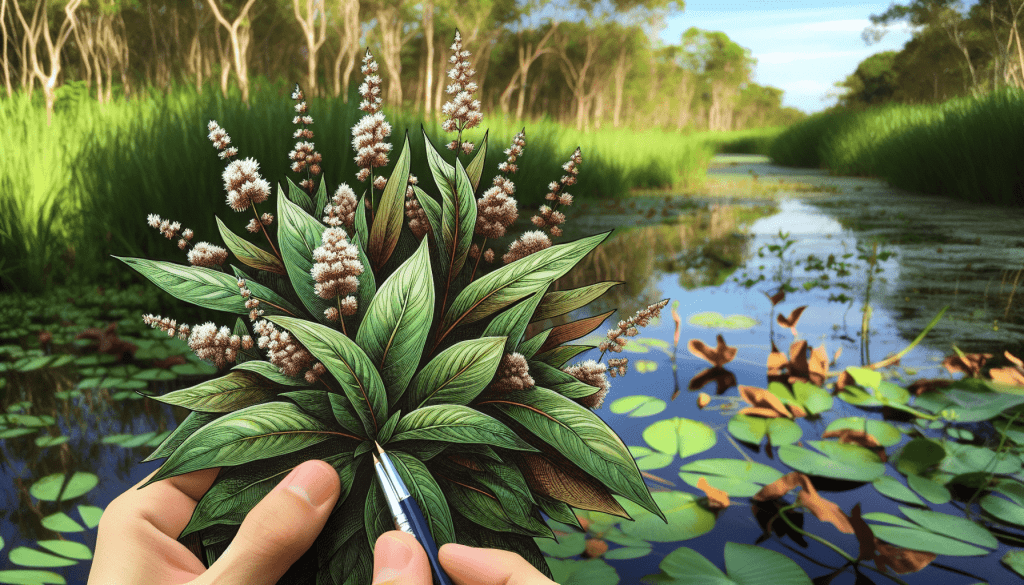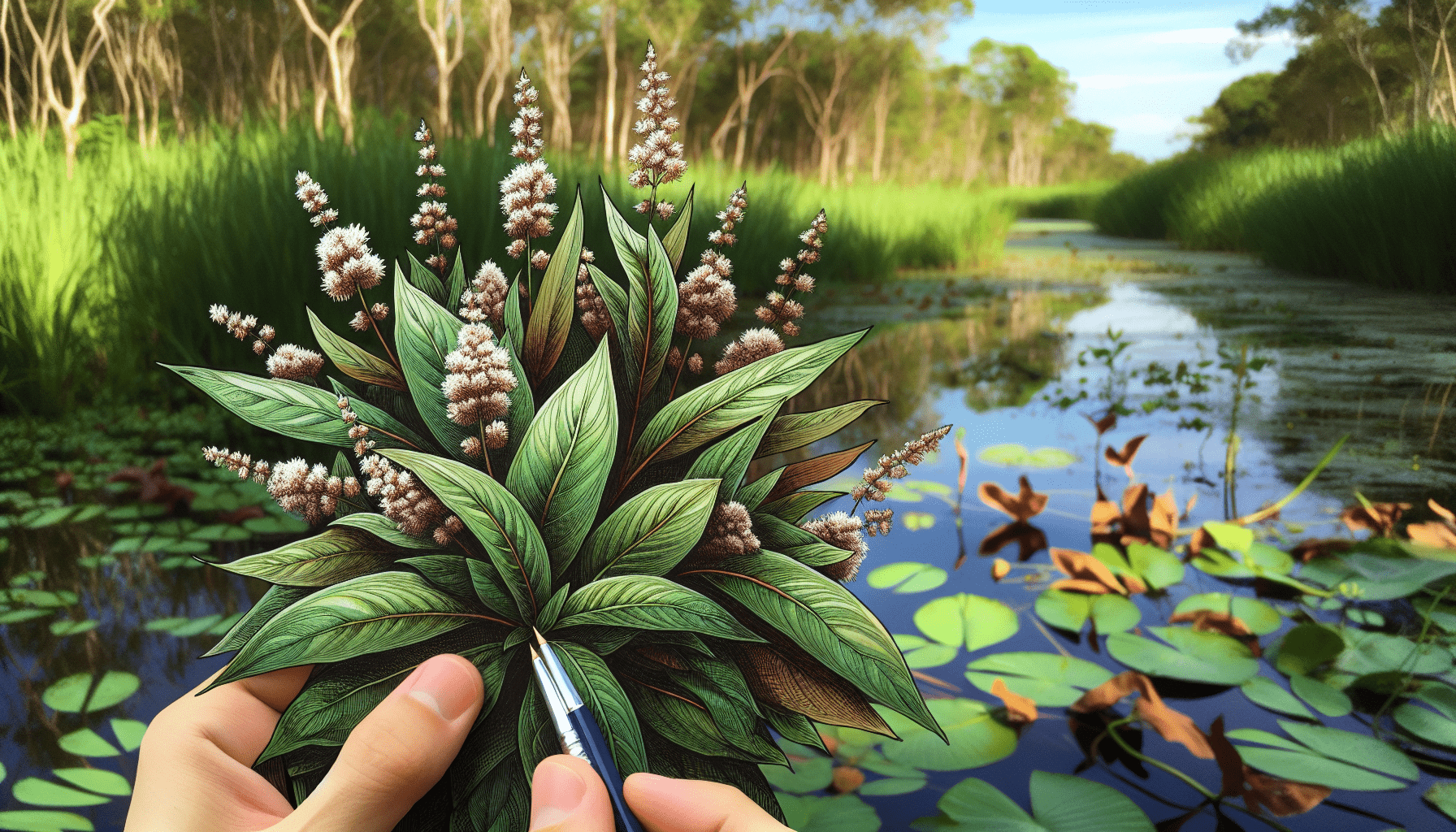Expert Tips for Eradicating Alligator Weed from Wetlands guides you through effective strategies to tackle this invasive menace. You’ll discover practical advice from leading experts on how to identify, manage, and ultimately remove alligator weed from your precious wetland habitats. By applying these tried-and-true methods, you can help restore the natural balance of your wetland ecosystem and support the flourishing of native species. Have you ever faced the challenge of dealing with invasive species like alligator weed in your local wetlands? It can often feel overwhelming and frustrating, but with the right knowledge and approach, effective eradication is possible. In this article, you’ll find expert tips for eradicating alligator weed from wetlands. By following these insights, you can help restore your wetlands to their natural, healthy state.

Understanding Alligator Weed
What is Alligator Weed?
Alligator weed (Alternanthera philoxeroides) is a highly aggressive and invasive aquatic and terrestrial plant. It thrives in wet environments like wetlands, rivers, and floodplains, where it can rapidly override native vegetation. Its stout, creeping stems and broad leaves can form dense mats, which choke out native species and disrupt ecosystems.
Why is Alligator Weed a Problem?
Alligator weed poses several ecological and practical issues. It outcompetes native plants, reduces biodiversity, and interferes with water flow. For humans, it can obstruct waterways, complicate fishing activities, and reduce the aesthetic and recreational value of wetlands. Additionally, dense mats of alligator weed can create breeding grounds for mosquitoes, leading to public health concerns.
Identifying Alligator Weed
Proper identification is essential for eradication. Alligator weed has the following characteristics:
- Leaves: Oblong or lance-shaped, usually arranged in opposite pairs.
- Flowers: Small, white, papery, and grow in clusters resembling a cloverhead.
- Stems: Hollow and buoyant, enabling the plant to float on water.
Methods for Eradicating Alligator Weed
Mechanical Control
Mechanical control involves using physical methods to remove the weed. It’s often one of the first steps in managing alligator weed.
Hand Pulling
Hand pulling can be effective for small infestations. It’s important to remove the entire root system to prevent regrowth. Here’s how you can do it:
| Step | Description |
|---|---|
| 1 | Wear protective gloves to safeguard your skin. |
| 2 | Use a small spade or trowel to loosen the soil around the weed. |
| 3 | Carefully pull the plant out, ensuring you remove the roots. |
| 4 | Dispose of the plant in a bag to prevent any parts from spreading. |
Mowing and Cutting
For larger areas, mowing and cutting can temporarily manage the weed but typically needs to be combined with other methods for long-term control.
| Step | Description |
|---|---|
| 1 | Use a brush cutter or mower. |
| 2 | Cut the plants as close to the ground as possible. |
| 3 | Repeatedly cut every few weeks to deplete the plant’s energy reserves. |
Chemical Control
Herbicides can be effective, especially for large infestations. However, they must be used with caution to avoid damaging native species and contaminating water sources.
Selecting the Right Herbicide
Different herbicides work best for alligator weed:
- Glyphosate: Effective but non-selective; can kill surrounding vegetation.
- 2,4-D: Selective for broadleaf weeds, sparing grasses.
- Imazapyr: Effective but long-lasting; use cautiously near water.
Application Methods
Proper application ensures maximum effectiveness and minimal environmental impact:
| Method | Description |
|---|---|
| Foliar Spray | Apply herbicide to leaves using a backpack sprayer or boat-mounted sprayer. Best during active growth periods. |
| Stem Injection | Ideal for dense stands; inject herbicide directly into the hollow stems. |
| Basal Bark | Apply herbicide to the base of the stems, effective in non-flooded areas. |
Biological Control
Biological control involves using natural enemies of the weed to reduce its population.
Insects
Several insects have been used successfully against alligator weed:
- Alligator Weed Flea Beetle (Agasicles hygrophila): Feeds on leaves, reducing photosynthesis.
- Alligator Weed Stem Borer (Arcola malloi): Damages stems, inhibiting growth.
Insect control can take time to show results and may not completely eradicate the weed, but it can reduce its vigor significantly.
Integrated Pest Management (IPM)
Integrated Pest Management combines multiple control methods for a more sustainable and effective solution. This approach includes:
- Monitoring: Regularly check the infestation status and the effectiveness of control measures.
- Thresholds: Determine acceptable levels of weed presence, as complete eradication may not be feasible.
- Combining Methods: Use mechanical, chemical, and biological approaches together.
Steps to Implement Integrated Pest Management
Step 1: Assessment
Begin by conducting a thorough assessment of the infestation. Identify the areas affected and the severity of the problem. Use GPS mapping for larger wetlands to pinpoint specific sites.
Step 2: Develop a Management Plan
Create a detailed plan that outlines your integrated approach. This should include timelines, responsible parties, and specific methods for each area.
Step 3: Execute the Plan
Implement the methods outlined in your plan. For example, you might start with hand pulling in less accessible areas, followed by herbicide treatment on larger patches, and then introduce biological controls.
Step 4: Monitor and Adapt
Regularly monitor the treated areas. Take note of the effectiveness of each method and make adjustments as needed.
Long-term Management and Prevention
Regular Monitoring
Even after initial eradication, continue to monitor the area regularly. Early detection can prevent a new infestation from becoming unmanageable.
Public Awareness and Education
Educate the local community about the impacts of alligator weed and the importance of prevention. Public awareness campaigns and workshops can be very effective.
Barrier Methods
Consider physical barriers to prevent the spread of alligator weed. For example, barriers can be installed in water channels to stop the movement of weed fragments.
Maintenance
Regular maintenance, such as hand pulling any new growth and applying herbicides as necessary, helps to keep the alligator weed under control.

Case Studies and Success Stories
Case Study: Lake Tarpon, Florida
In Lake Tarpon, an integrated approach was used to control alligator weed. Initial efforts included hand pulling and herbicide applications. This was followed by the release of alligator weed flea beetles. Over two years, the infestation was reduced by 85%.
Case Study: Murray-Darling Basin, Australia
In the Murray-Darling Basin, large infestations of alligator weed were managed using a combination of mowing, herbicide application, and biological control. Regular monitoring and public involvement were key to the project’s success.
Expert Recommendations
Consult a Professional
If you’re dealing with a significant infestation, consulting a professional can be invaluable. Experts can provide tailored advice and may have access to more effective tools and methods.
Use GIS Mapping
For larger areas, using GIS mapping can make it easier to track the extent of the infestation and plan control measures.
Be Persistent
Persistence is essential. Alligator weed is resilient, but with consistent efforts, you can significantly reduce its impact.
Conclusion
While eradicating alligator weed can be challenging, it’s not impossible. By understanding the plant, using a variety of control methods, and maintaining a long-term management plan, you can successfully mitigate the impact of this invasive species on your wetlands. Remember, persistence and a multi-faceted approach are key. Together, we can work towards healthier, more resilient wetlands.
